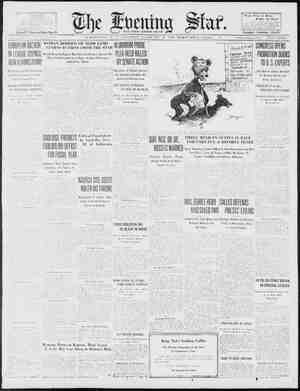The Daily Worker Newspaper, February 27, 1926, Page 7
You have reached the hourly page view limit. Unlock higher limit to our entire archive!
Subscribers enjoy higher page view limit, downloads, and exclusive features.
Second Section: This Manazine Section . The Dis silliiocs Buyers of THE DAILY WORKER. Aynears Every Saturday in The DAILY WORKER, SATURUAY, recRUARY 27, 1926 a God, the Supreme ANTHONY BIMBA, Communist editor, is on trial at Brockton, Mass., for having told a gathering of shoe workers that there is no god. _Bimba is also on trial under the charge of seditious utterance, because he is said to have told the shoe workers that the most intelligent, courageous and aggressive workers ought to join the Workers (Communist) Party.” But the tremendous sensation that is now blazoned in the headlines of the capitalist newspapers of Massachusetts is based on the fact that the Com- munist editor is being prosecuted in the greatest of all shoe fac- story towns, for denying the existence of the greatest of all shoe manufacturers—to-wit: God, otherwise Jehovah, the Almighty, maker of not only shoes, but also of men, women, hats, coats, dogs, cows, monkeys and bacteria—in short, the’ Supreme Manu- facturer of all.things, who even made, so they say, the smaller shoe manufacturers of Brockton in his own very image. We must remember that MassacHtusetts is a very pious state. The great Roman catholic church has a little kingdom of its own there, with Boston the seat of the mighty prince of the church of god, Cardinal O’Connell. Then there is the Protestant Epis- copal church, with its own little kingdom, and there also, in Bos- ton, is the seat of that other powerful church of Christian Science, founded by the Holy Lady, Mrs. Eddy—and there is the stronghold of Theosophy, and Spiritualism, and New Thought, Unitarianism, Ethical Culture, and all of the other variations of ideas of the Supreme Manufacturer. oe It is said that the Roman Catholic Cardinal and his priests are especially interesting themselves in the effort to put the blasphemer in jail. But at the same time the judge and the pro- secutor are members of the Unitarian church, which varies from ‘most other churches in that it denies that the Supreme Manu- ’ facturer has a superintendent and foreman known respectively, as the Holy Ghost and Jesus Christ. — ‘ ey Shoe Manufacturer All the cohorts of god are assembled in a united front to put Bimba, the blasphemer, in a little stone cell. _ An old law, 230 years old, enacted in the year 1696, im the law under which Bimba is prosecuted. The fact that this old law, enacted at the time when Massachusetts was a colony and was steadily burning witches, and which in its first form im- posed the death penalty for atheists, is the only thing which tends to break the united front of the bourgeois community by splitting off the “liberal” section of the bourgeoisie which does not like to uphold what are called the “blue laws.” But it is pointed out by the pr@secutors that the old “blue law” has been re-enacted in recent times, long after the burning of witches had ceased and after the Supreme Manufacturer had changed his ways and had inspired the setting up of United Shoe Machinery company’s appliances. This is as it should be. God has to be protected, not only in a colonial village, but also in a modern factory. Y- must the human shoe manufacturers of Massachusetts "" preserve the belief of the shoe workers in the Supreme Manufacturer of Heaven? The question almost answers itself. Shoe workers must believe in the Divine Shoe Manufactur- er of Heaven because it helps to make them believe in the mor- tal shoe manufacturers of Brockton. The shoe manufacturers of Brockton have to have god. Those who have inquired into these forbidden matters know that god has undergone many changes, and with every change he has adapted his character exactly to suit the character of the ruling classes of the earth at the particular time—and always in each country to the particular ruling class of that country. With the break-up of feudalism, god was transformed from a feudal warrior into a rotund burger. With the coming of the factory system, god shaved off his beard, put on a white vest and : (Continued on page 2.)




